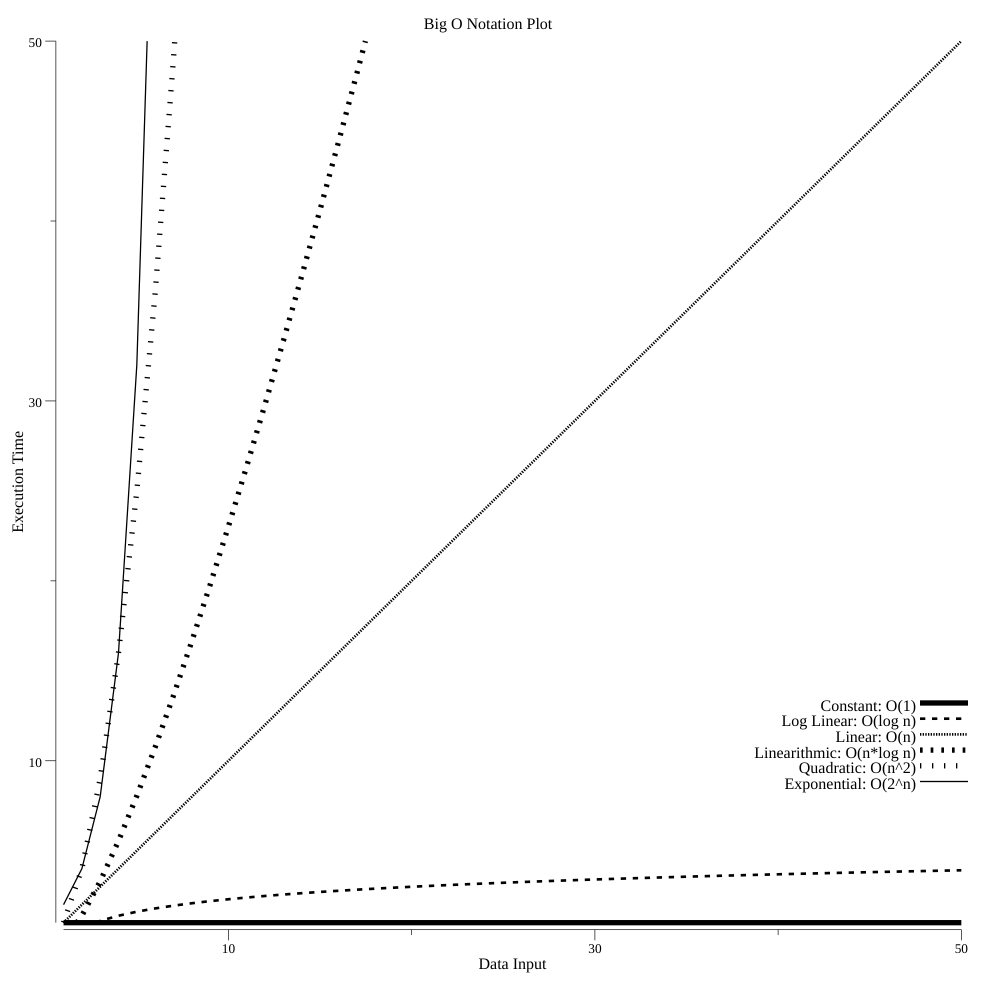Big O notation is a good way to approximate the speed in which the algorithm you've chosen will change with the size of the data that's passed to your algorithm. Big O notation is often described as the growth behavior of a function, specifically its upper limit. Big O notation is broken down into classes. The most common classes that are described are O(1), O(log n), O(n), O(n log n), O(n2), and O(2n). Let's take a quick look at each of these algorithms, their definitions, and a practical example of them in Go.
A graph of these common classes is as follows. The source code for generating this plot can be found at https://github.com/bobstrecansky/HighPerformanceWithGo/blob/master/2-data-structures-and-algorithms/plot/plot.go:

This Big O notation graph gives us a visual representation of the different algorithms that are commonly used in computer software.
